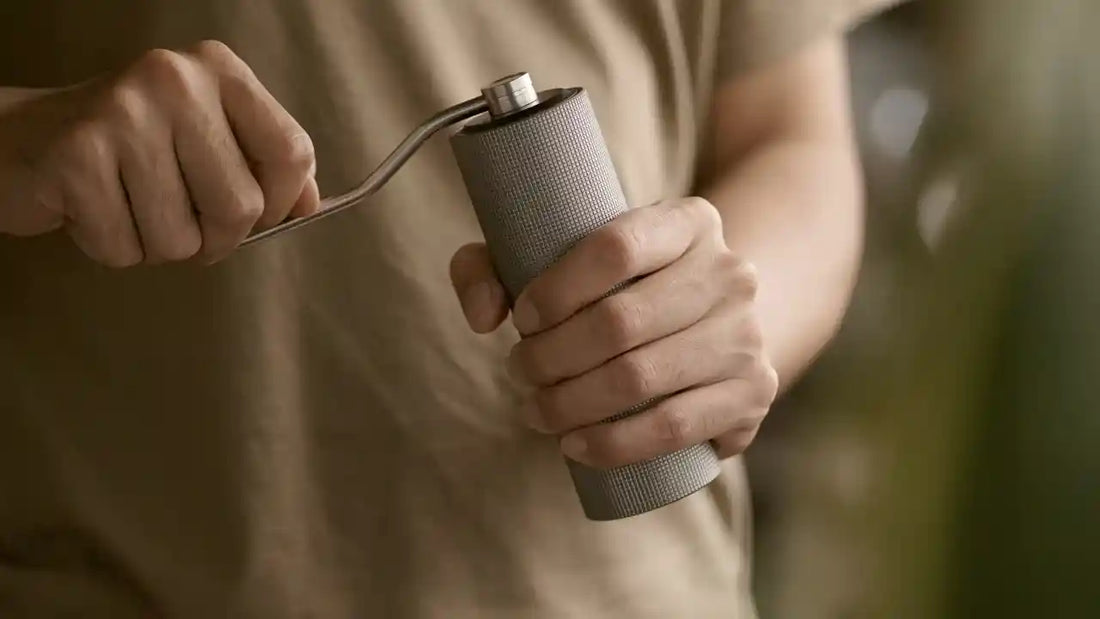
Best Coffee Grinders for Every Budget: Blade vs. Burr Explained
Share
If you’re serious about brewing delicious coffee at home, a good grinder isn’t optional, it’s essential. Freshly ground coffee unlocks aromas and flavours you’ll never get from pre-ground beans.
But with so many grinders available in India, from a few hundred rupees to tens of thousands, how do you choose the right one? And do you really need a burr grinder, or will a basic blade grinder do the job?
This guide cuts through the confusion, explaining blade vs. burr grinders, what features matter most, and what you can expect across different budgets, all so you can find the perfect grinder for your brewing style.
Blade vs. Burr Grinders: The Basics
Blade Grinders (Affordable, but Inconsistent)
Blade grinders use spinning blades, like a tiny blender, to chop beans into pieces. They’re compact, easy to find, and very budget-friendly. But they create uneven grounds, with powdery fines and big chunks in the same batch.
This inconsistency leads to over-or under-extraction, resulting in bitter or sour coffee. Blade grinders also tend to heat the beans, which can mute delicate flavours.
Burr Grinders (Consistent, Precise, Superior)
Burr grinders crush beans between two abrasive surfaces called burrs (flat or conical). This creates a uniform grind and gives you control over grind size, which is essential for getting the best flavour in pour-over, espresso, or any method requiring precision.
Burr grinders minimize heat, preserving more of the coffee’s natural aromas. While they cost more and take up more space, they’re a worthwhile investment for anyone who wants consistent, great-tasting coffee.
Flat vs. Conical Burrs
- Flat burrs grind quickly but can generate more heat.
- Conical burrs typically spin at lower speeds, reducing heat buildup and helping preserve flavour.
Either type works well for home use, what matters more is burr size, material, and build quality.
Manual vs. Electric
- Manual (hand-crank) grinders are portable, quiet, and affordable. They’re perfect for small batches or travel but require physical effort.
- Electric grinders offer speed and convenience, making them ideal for daily brewing, especially if you brew multiple cups at a time.
Key Features to Look for in a Grinder
Regardless of price, these specifications make a big difference in your daily coffee:
Grind Settings
More settings give you flexibility. A good grinder should cover coarse (French press) to fine (espresso) — or at least match your preferred brew method.
Burr Material
Steel burrs are durable and common; ceramic burrs stay sharp longer and produce less heat but can crack if dropped.
Capacity
Consider hopper and grounds container size, if you brew one cup a day, small capacity is fine; brewing for a family might need a larger grinder.
Motor Speed & Power (electric only)
Lower RPMs reduce heat, preserving flavour. Look for consistent torque, not just wattage.
Build Quality
Plastic bodies can flex or break; metal housings and burrs last longer and stay aligned.
Ease of Cleaning
Grinding creates fine dust and oils. Choose a grinder with removable burrs or easy-to-access internals so you can clean it regularly.
Noise Level
Burr grinders (especially electric) can be loud; if you brew early in the morning, consider quieter models or manual options.
Grinders by Budget (for Indian Home Brewers)
Entry-Level: ₹500–₹2,000
- Expect simple blade grinders or basic manual mills.
- Best for beginners on a tight budget who brew simple drip or French press.
- You’ll trade grind consistency for price, but it’s better than buying pre-ground coffee.
Mid-Range: ₹2,000–₹8,000
- Entry-level electric burr grinders or quality manual burr grinders.
- Good choice for pour-over, Aeropress, and basic espresso.
- Expect better grind uniformity, multiple settings, and steel burrs.
High-End: ₹8,000+
- Precision-focused burr grinders with stepless adjustment, metal construction, and features like timed dosing.
- Ideal for serious home brewers who want café-level consistency, especially for espresso or specialty pour-overs.
- Built to last, with better retention (less old grounds stuck inside) and minimal grind variation.
Manual Burr Grinders (All Budgets)
- Small, portable, and don’t require power.
- Great value for single-cup brewing or travel.
- High-quality manual grinders can match entry-level electric burr grinders’ performance, and often cost less.
Tips for Choosing the Right Grinder for Your Brew Method
-
French Press / Cold Brew: Prioritize grinders that can produce consistent coarse grounds without large fines that cause muddiness.
-
Pour-Over / Drip: Look for adjustable burr grinders with a wide range of medium-coarse settings for clarity and balanced extraction.
- Espresso: Requires very fine, precise, and consistent grounds, only good burr grinders (manual or electric) can deliver this reliably.
Conclusion
Choosing the right grinder is one of the best upgrades you can make for better coffee at home. Blade grinders are affordable but inconsistent. Burr grinders, while pricier, produce uniform grounds that elevate your brews to café-quality.
Focus on the grind range you need, build quality, and ease of cleaning, and match your grinder to your favourite brewing style. Remember, great coffee starts with a great grind.
Ready to brew better coffee? Explore our freshly roasted specialty coffee beans and take your home brewing to the next level.
FAQs
1. What’s the difference between blade and burr coffee grinders?
Blade grinders chop beans unevenly, leading to inconsistent flavours. Burr grinders crush beans uniformly, giving better control over grind size and a more balanced cup.
2. Is a burr grinder really worth it for home coffee brewing?
Yes! If you brew pour-over, espresso, or want consistently great coffee, a burr grinder is one of the best upgrades you can make for flavour and control.
3. Can I use a blade grinder for espresso?
Blade grinders produce inconsistent grounds, which makes it almost impossible to dial in proper espresso shots. A burr grinder is strongly recommended for espresso.
4. What type of grinder is best for French press coffee?
For French press, a burr grinder with coarse grind settings works best. It ensures consistent, large particles that reduce sludgy or muddy coffee.
5. Should I buy a manual or electric coffee grinder?
Manual grinders are great for portability and affordability but require effort. Electric grinders are faster and better for daily use, especially if you brew multiple cups.
6. How much should I spend on a coffee grinder for home use?
A good budget is ₹2,000–₹8,000 for decent burr grinders. Under ₹2,000, blade grinders or basic manual mills are available but sacrifice consistency.
7. Does grind size really matter for different brew methods?
Absolutely. Grind size affects extraction time and flavour. For example, espresso needs fine grounds; French press needs coarse. The right grind is key to great coffee.
8. Can I grind spices in a coffee grinder?
It’s best not to grind spices in your coffee grinder. Spices can leave oils and residues that affect coffee flavour. Use a separate grinder for spices.
9. How often should I clean my coffee grinder?
Clean your grinder every 1–2 weeks for daily use to prevent old coffee oils and particles from affecting flavour. Burr grinders often allow easy burr removal for cleaning.
10. What features should I look for when buying a coffee grinder?
Look for adjustable grind settings, burr quality (steel or ceramic), solid build, low static, ease of cleaning, and motor speed that minimizes heat buildup.




